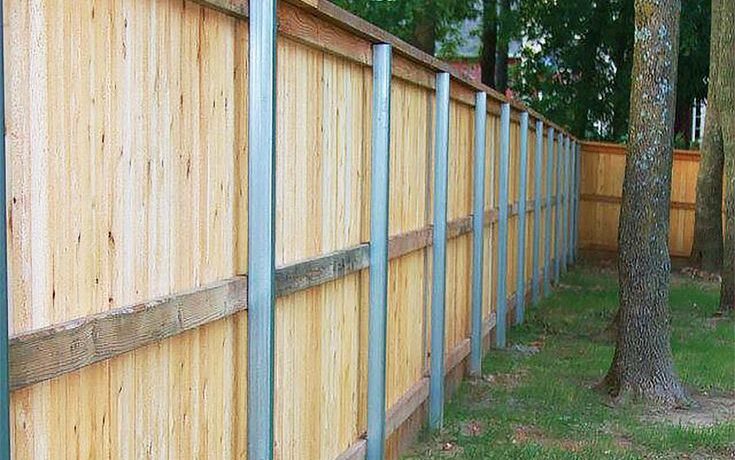All Categories
Featured

Mounting a fence around your home is an excellent method to improve safety, aesthetic, and personal privacy charm. Proper preparation is essential to ensure the installation goes smoothly and without problems. By taking the time to prepare your residential property, you can prevent hold-ups, extra prices, and prospective concerns during the installation process. Here's a detailed guide on exactly how to prepare your property for a fence installation.
- Establish Your Home Lines. Prior to you begin any type of work, it's essential to understand where your property lines are located. Developing a fence on or over your residential property line can lead to disagreements with neighbors and even legal issues. You can determine your residential property borders by examining your action, property study, or utilizing a map from your regional region workplace. Take into consideration hiring a specialist property surveyor to note your building lines properly if you're unsure regarding the exact limits. This step will certainly make sure that your fencing is installed in the right location.
- Inspect Citizen Zoning and License Requirements. Different districts have varying policies about fencing setup. Before you begin digging openings, check with your local zoning division to figure out if there are any restrictions or license requirements for fencing setup. Some locations might have limitations on fencing height, products, or placement, specifically along the front lawn or near junctions. Additionally, you might need a license prior to you begin building. Not following neighborhood guidelines might lead to penalties or the requirement to get rid of the fencing.
- Clear the Setup Location. One of the most crucial steps in preparing your home for a fencing is removing the area where the fencing will be set up. Begin by removing any kind of challenges, such as rocks, debris, and plants, along the proposed fence line. If there are trees, hedges, or vines in the means, consider removing them, specifically if they are close to the fence line. The fence installment process will go a lot a lot more efficiently if the area is clear, and the employees will have more room to dig article openings and mount the fencing.
- Mark Underground Utilities. Before you begin excavating, it's important to inspect for any underground utilities that could disrupt the setup. Gas lines, water pipes, electric cords, and sewer lines are usually buried beneath the ground. Call your energy companies to have them mark the location of these utilities along the fence line. In several areas, there is a cost-free solution available that will certainly send out professionals to note energy lines before you dig. Going into these energies can result in significant damages, security hazards, and expensive repair services.
- Interact with Your Neighbors. Installing a fence can influence your neighbors, particularly if it's a common limit. It's an excellent idea to have a conversation with your neighbors prior to starting the task. Let them learn about your strategies and discuss any prospective issues. This can assist stop misconceptions and permit you to address any problems, such as fence elevation or placement, that might emerge. A friendly conversation can also stay clear of prospective problems in the future.
- Select the Right Fence Layout and Materials. Take time to pick a fence design and material that finest matches your demands, aesthetic preferences, and budget plan. Timber fencings require more upkeep than plastic fences, which can be an important element if you want a low-maintenance alternative.
- Set a Spending plan. Fence tasks can vary in cost relying on the size of your building, the kind of products used, and the intricacy of the installment. Prior to starting the job, set a sensible spending plan that consists of the expense of products, labor, permits, and any unanticipated expenditures. If you're hiring a professional fence installer, request quotes from numerous contractors to contrast costs and ensure you're obtaining a fair offer.

- Prepare for Setup Day. As soon as all the prep work are total, ensure your residential property is all set for the installment group. Supply clear access to the setup website, and maintain children and animals securely far from the work area. You might likewise intend to have a designated place for the service providers to park their lorries and store devices throughout the job.
Verdict. Preparing your property for fence installation can conserve you time and money in the future while ensuring the procedure goes smoothly. By identifying your property lines, checking for licenses, getting rid of the installation area, and communicating with neighbors, you'll be establishing on your own up for an effective project. Appropriate preparation is crucial to a convenient fence installment that improves the safety, personal privacy, and beauty of your home.
Latest Posts
Include Convenience and Personality to Your Home with Area Rugs
Published Apr 20, 25
1 min read
Transform Your Home with Resilient Wood Floor Covering from Carpet Interiors Floor & Home
Published Apr 20, 25
1 min read
Your Regional Floor Covering Professionals in Orland Park, IL
Published Apr 20, 25
1 min read
More
Latest Posts
Include Convenience and Personality to Your Home with Area Rugs
Published Apr 20, 25
1 min read
Transform Your Home with Resilient Wood Floor Covering from Carpet Interiors Floor & Home
Published Apr 20, 25
1 min read
Your Regional Floor Covering Professionals in Orland Park, IL
Published Apr 20, 25
1 min read